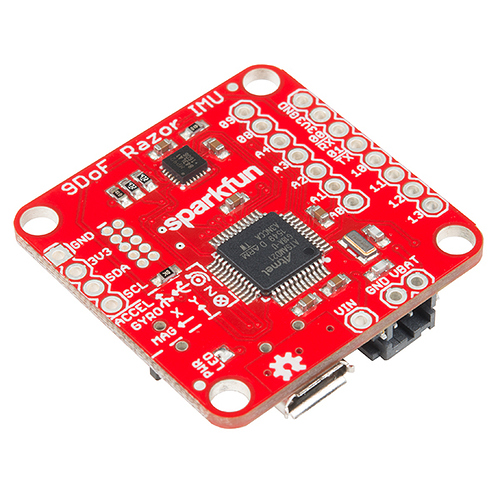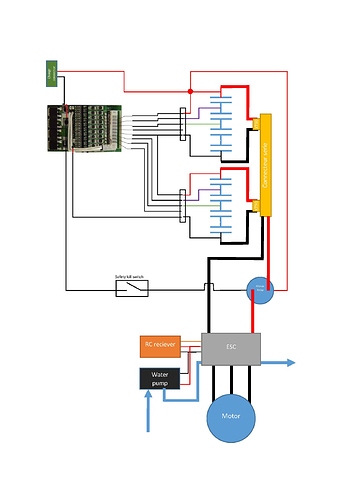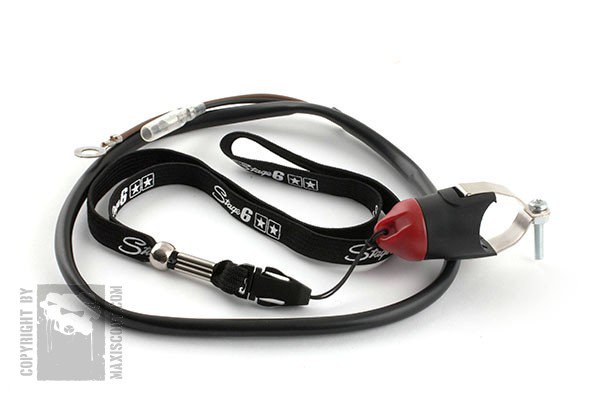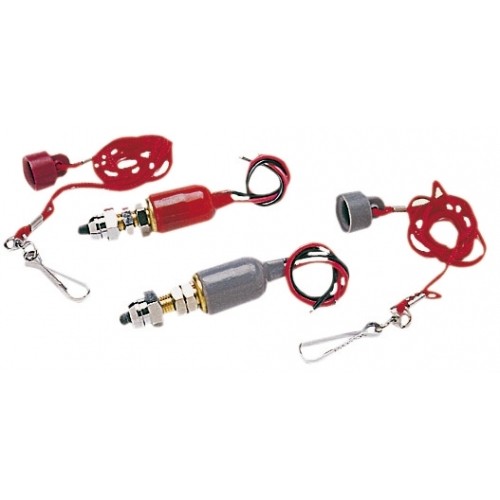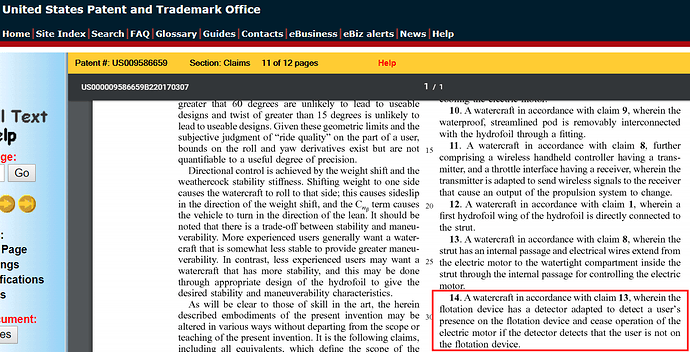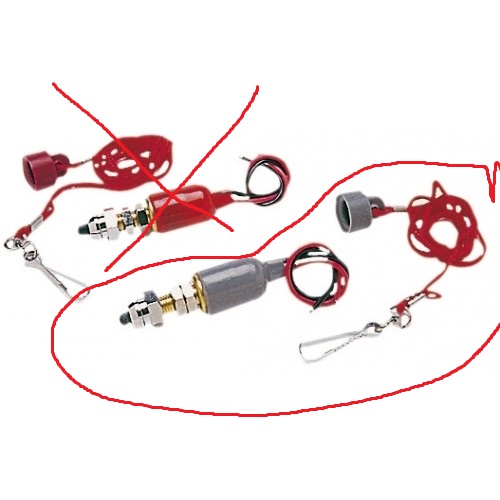To make the e-foil secure my plan is to have a MCU in the remote and the board using a ESP32 communicating through BLE. The one on the board takes input from a couple of sensors and throttle on the remote. It also controlling the battery level, ESC and the relay (maybe 2 relays, one for the spark eliminator and one for the main).
Sensors that I´m thinking of is, many of them are maybe great to have but not need to have:
-Some type of sensor to detect if the rider is in startposition
-Current sensors (limiting the ESC or detect failure)
-Voltage on the battery
-GPS (speed, distance)
-Axis
-RPM, maybe it could be done with a current sensor on the ESC motor output
-Temperature, ESC, Battery, motor, gearbox (one-wire)
-Ride hight and water depth, not sure what type of sensor to use. Right now I´m testing “Time of flight” sensors
-Load cell, to measure thrust, great to evaluate different props but in the end maybe speed and current will do
So if/how much throttle that will be sent to the ESC from the MCU would be based on the board status and the selected “ride mode”
Here´s some examples:
To be able to start the motor the board should be lie flat and the if it´s possible to detect the rider.
Depending on speed and ride hight the MCU maybe limiting the throttle. For example if you try to set full throttle from standing still it will ramp it up slowly. But it if you foiling in 75% of the speed then it may give full throttle.
Also the setting of full speed could be adjusted as you be need more power to get up foiling then you need later.
To protect the motor and gearbox max power could be allowed for a couple of seconds…but only using the “insane mode” 
If the current suddenly deviate from the throttle input the power could be ramped down. It could be problem with debris or something else that in the end could be dangerous or expensive.
The opposite could also be interesting so if you foiling and suddenly the current goes down. I think normally this will happen when going up on the foil, the speed increase but the current stays the same or getting lower. So that could be one of the pattern to detect foiling mode.
As other people mention the axis could be used to detect if the rider falling of so then let the MCU cut the power or put in reverse so the rider will not fall on the e-foil…that would maybe be more dangerous.
In the beginner mode a fast throttle release could adjusted by the MCU to be softer.
The kill switch could be attached so it disconnect the power between the MCU and the main power relay.
Remote control will having a display with battery level, speed, settings. ESP32 having a built in “Hall effect” sensor that I thinking of using for the throttle but that maybe hard to implement in the design and maybe it will be easier to have a separate. Instead of buttons I´m planing to use the built in touch sensor support but I don´t know how it will behave in water. And of course the remote should be wireless charged.
As the ESP32 support wifi you could download the log to you computer or phone. And another great part with wifi is that you could program it over the air (OTA) without taking it out of the board. Of course with the risk that some hacked you E-foil 
I´m thinking of have one relay for the spark eliminator wire to first load the ESC and then another relay for the main connection. Are solid state relays suitable for this application? I
Here is an SSR 120A but in the description it says when using with inductive load leave up to 7 times margin?
https://www.aliexpress.com/item/SSR-DC-solid-state-relay-120A-DC-to-DC-non-contact-switch-relay/32697383613.html?spm=a2g0s.13010208.99999999.305.paD6g5
Or could we use a Truck-Motor-Automotive-Relay?
https://www.aliexpress.com/item/12V-200A-Car-Truck-Motor-Automotive-Relay-Continuous-Type-Automotive-Car-Relays-High-Power-Contact-Load/32790303922.html?spm=2114.search0104.3.19.Qyosov&ws_ab_test=searchweb0_0,searchweb201602_4_10152_10065_10151_10344_10068_10345_10342_10343_10340_10341_10171_10541_10562_10084_10083_10307_5680011_10301_10303_10060_10155_10154_10056_10055_10539_10537_10312_10536_10059_10313_10314_10534_10533_100031_10103_10073_10102_10557_10142_10107,searchweb201603_25,ppcSwitch_2&btsid=3ff6e1f7-efb2-4469-a992-ea03045e8f02&algo_expid=0e2cf234-a9d7-43d6-b887-c6f6a3b9c42e-2&algo_pvid=0e2cf234-a9d7-43d6-b887-c6f6a3b9c42e
I wonder long the ESC will run when cutting the battery input? I assume that this could have to do with how big the capacitor in the ESC are?
 ? aluminum box, plastic box with batteries inside those fiber cloth bags?
? aluminum box, plastic box with batteries inside those fiber cloth bags?